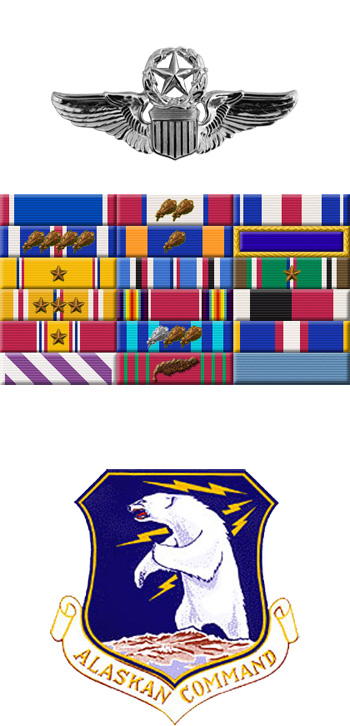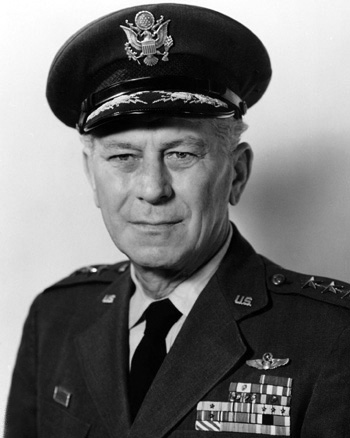
|
Frank A. Armstrong, Jr. |
 |
|||
| Rank, Service | ||||
Lieutenant General O-9, U.S. Air Force |
||||
| Veteran of: | ||||
|
||||
| Tribute: | ||||
Frank Armstrong was born on May 24, 1902, in Hamilton, North Carolina. He received a bachelor of laws degree from Wake Forest College in 1923 and a bachelor of science degree from the same college in 1925. Armstrong enlisted as a Flying Cadet in the U.S. Army Air Corps in February 1928, and was commissioned a 2d Lt and awarded his pilot wings at Kelly Field, Texas, in March 1929. His first assignment was with the 2nd Bomb Group at Langley Field, Virginia, from March 1929 to January 1930, and then after attending Flying Instructors' School, he was a flying instructor at March Field, California, and later at Randolph Field, Texas, from February 1931 to January 1934. He served as chief pilot of the Air Corps mail operations at Salt Lake City, Utah, from January to December 1934, and then served at Albrook Field, Panama Canal Zone, from December 1934 to March 1937. Armstrong next served with the 13th Bomb Squadron at Barksdale Field, Louisiana, from March 1937 to November 1939, and then as commander of the 13th BS from November 1939 to November 1940. He was a military observer in England from November 1940 to February 1941, a pilot with the 90th Bomb Squadron at Savannah Air Base, Georgia, from February to April 1941, and then a pilot with the 3rd Interceptor Command at Tampa, Florida, from April to August 1941. After serving as a staff officer with Air Force Headquarters in Washington, D.C., Col Armstrong went to England and served as an operations officer, group commander, and wing commander with 8th Bomber Command, from February 1942 to August 1943. During this time he led the first daylight raid ever made by the U.S. Army Air Forces over Axis territory, and also the first heavy bomber raid over Germany. The book and movie "Twelve O'Clock High" was based on his time with the 8th Air Force during this period. He then commanded bomber training wings in Texas, Oklahoma, and Colorado, from August 1943 to November 1944, followed by service as commander of the 315th Bomb Wing at Peterson Field, Colorado, and then deployed with the Wing to the Pacific, from November 1944 to September 1946. During this time he led the last heavy bombing raids of World War II. Gen Armstrong then served as senior air advisor with the Armed Forces Staff College at Norfolk, Virginia, from September 1946 to June 1948, followed by service as deputy commanding general of Alaskan Air Command from June 1948 to July 1950. He became commanding general of Alaskan Air Command in July 1950, and commanding general of Sampson AFB, New York, in January 1951. His next assignment was as commanding general of the 6th Air Division at MacDill AFB, Florida, from May 1951 to October 1952, and then commanding general of 2nd Air Force at Barksdale AFB, Louisiana, from October 1952 to July 1956. Gen Armstrong returned to Alaska in July 1956 as commander of Alaskan Air Command, before serving as commander-in-chief of Alaskan Command at Elmendorf AFB, Alaska, from September 1956 until his retirement from the Air Force on August 1, 1962. Frank Armstrong died on August 20, 1969, and was buried at Arlington National Cemetery. His son, Maj Frank A. Armstrong, III, USAF, was killed in action during the Vietnam War on October 6, 1967, while flying over Laos. |
||||
|
||||

